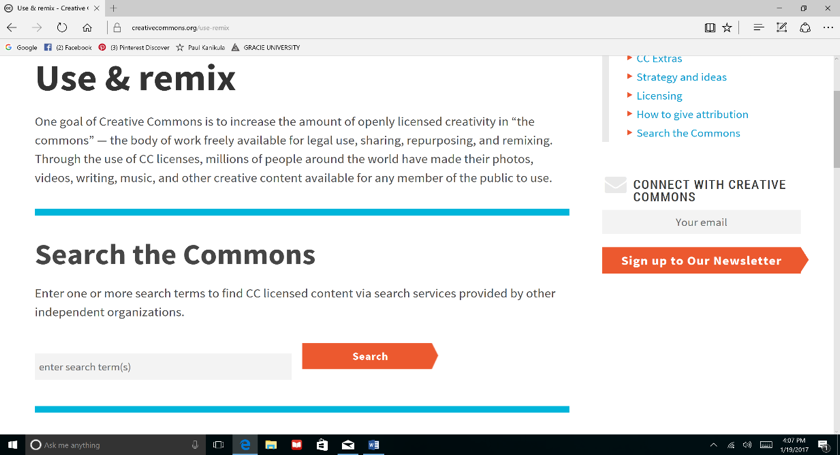So, you just wrote a great blog post or made a video and now you need something else to spruce it up. Where do you go? Can you use any old image or song you find on the web? Probably not. So many people make the mistake of using what they can find easily and this is where the trouble begins. The image at the top of this post was found through the Creative Commons website and is being used legally. It was easy to find and just as easy to give credit to the original creator.
A little history on Creative Commons. A non-profit organization that was created back in 2001 by the content creation community. The organization provides free licenses that allow you as a creator/author to have your works used by others, in the manner you specify. This is a great way for your works to be shared while still retaining the attribution you deserve for your work. Choosing a license is simple. Answer a few questions on their website and you are off and running with a new license for your works.

On the flip side, Creative Commons can be a great way for you to find work, done by others, and use it legally as a part of your own content. Let’s go back to that song you are needing for your video or the image for your blog. The Creative Commons website has a search area so that you can find the content you are looking for. The search function allows you to filter through many platforms like: Flickr, Google Images, Wikipedia and more.
 There are six major licenses available through Creative Commons that range from a license that only requires attribution to the original creator and can be added to and used commercially, to one that does not allow any reworking and is not for commercial use. Knowing these license types is important to making sure the works you are using are legal and the elements of each license is used correctly.
There are six major licenses available through Creative Commons that range from a license that only requires attribution to the original creator and can be added to and used commercially, to one that does not allow any reworking and is not for commercial use. Knowing these license types is important to making sure the works you are using are legal and the elements of each license is used correctly.
While there are six major licenses available they all fall under four main styles. Attribution applies to all types. Here is brief breakdown of the four conditions that an author/creator can place on licenses available through Creative Commons:
Attribution: This is least restrictive condition available and only requires that the author/creator be credited the way they have requested. This type of license can be used for commercial and non-commercial purposes. This is attached to all license types.
Share Alike: Under this style you can copy, display, perform and make changes to these works under the terms granted by the license. If you wish to share these works outside of what is permitted by the license, then the original author must give you permission.
Non-Commercial: You can use these works to perform, display and modify in a non-commercial way, unless there are no derivatives chosen.
No Derivatives: This is the most restrictive of conditions placed on a Creative Commons license. With this you can distribute, display and perform the original work. No modifications can be made without permission from the original author/creator. This can be placed on commercial and non-commercial licenses.
Make sure you know what is expected from each license and condition before you use another person’s work. You do not want to become the subject of copyright infringement. More information on the six major Creative Commons Licenses and these conditions can be found on http://creativecommons.org/licenses/.
<pImage Credit: “Creative Commons – CC Stickers” by Kristina Alexanderson is licensed under CC BY 2.0
Author: Mandee Kanikula

You can learn more about Mandee by connecting on LinkedIn.

0 Comments